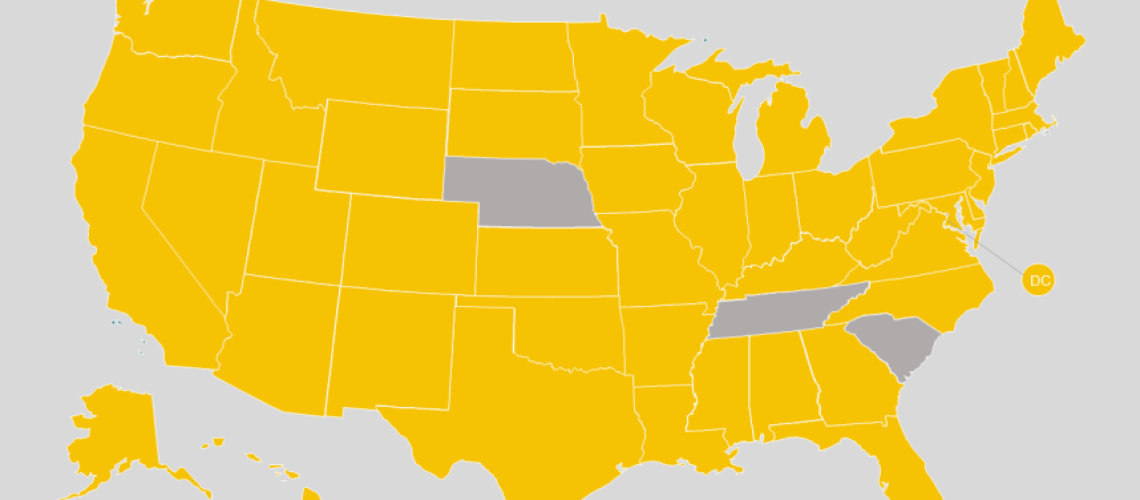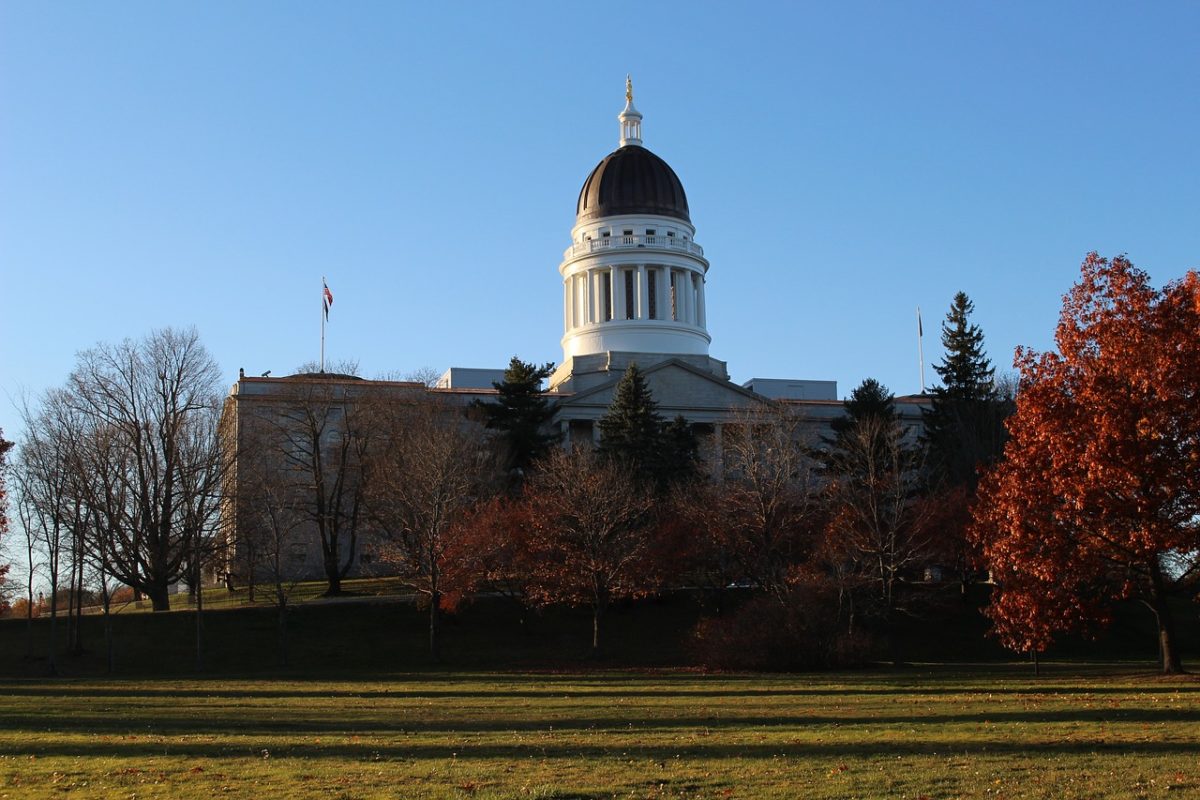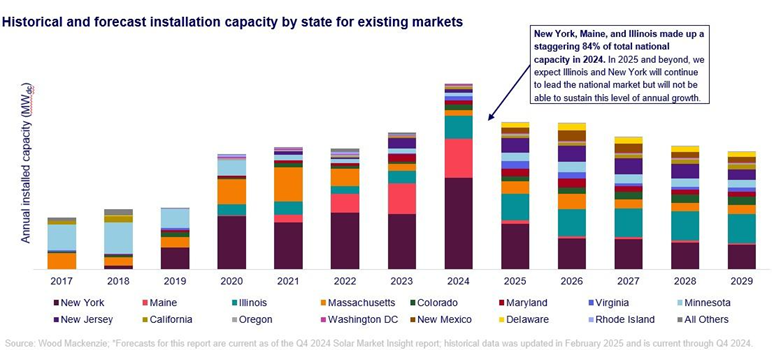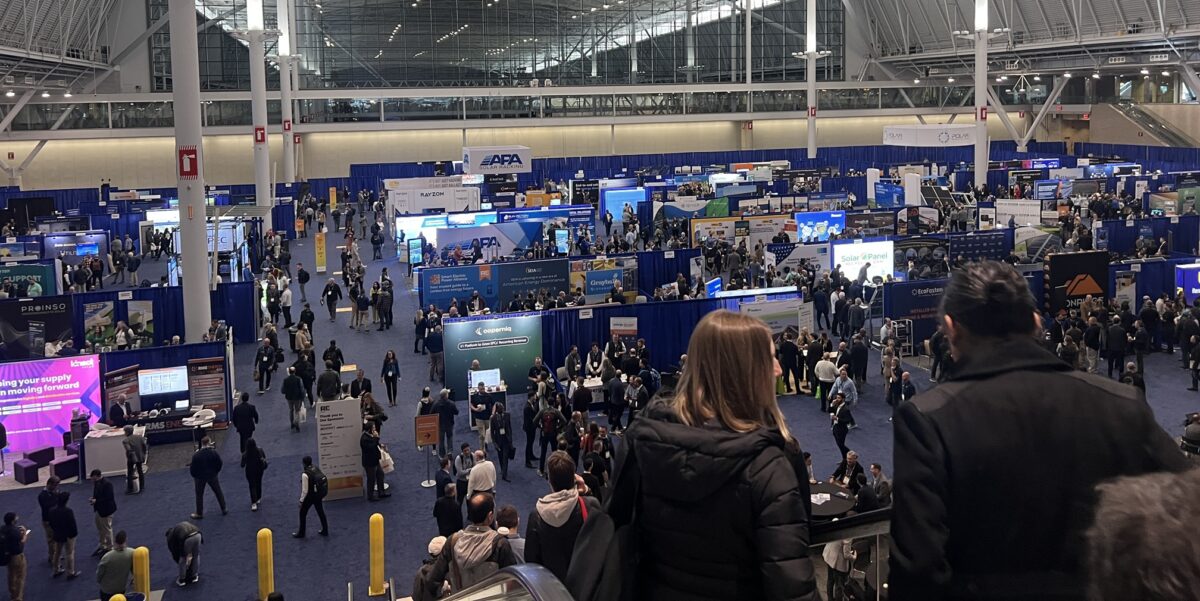Trends in U.S. solar policy as tracked by the NC Clean Energy Technology Center.
State-level policy is a key factor in distributed solar and energy storage markets across the United States. Policies change frequently across the 50 states, and tracking these changes are essential for businesses looking to maximize the value they provide.
The North Carolina Clean Energy Technology Center maintains DSIRE, or the Database of State Incentives for Renewables & Efficiency, to keep businesses and consumers up-to-date on distributed energy regulatory structures and related incentives. Below are 2023 trends as reported by DSIRE in a January 2024 report.
“Many states and utilities are transitioning away from traditional net metering structures and are researching or implementing new rate structures, whether that be net billing, time-of-use based net metering, or something in-between,” observed Rebekah de la Mora, senior policy analyst. “These changes are not just affecting residential customers, but also non-residential customers.”
A total of 273 state and utility level distributed solar policy and rate changes were proposed, pending, or decided in 2023, said the NC Clean Energy Technology Center.
Transition to net billing
In 2023 states continued to move toward net billing structure for distributed solar generation exports. California, Arkansas, and Idaho implemented a move from net metering to net billing. Hawaii’s HECO utility attained approval for its next generation of distributed energy resource tariffs, which will include an option for a net billing structure.
Low-to-moderate income incentives
States are submitting applications for the U.S. Environmental Protection Agency’s $7 billion Solar for All program, which provides incentives for income-qualified customers to adopt solar. A number of other states have approved community solar incentives for LMI customers, and California included an LMI customer adder for customers participating in virtual net metering programs.
Time-varying crediting
States are increasingly relying on time-varying rates for crediting the export of excess generation. North Carolina regulators approved a new time-of-use net metering tariff for Duke Energy, while the Hawaii Public Utilities Commission approved time-varying export credit rates for HECO’s new smart distributed energy resource tariff. California implemented time-varying credit rates as part of its NEM 3.0 tariff.
Distributed generation fees rejected
Utility proposals in recent years have included calls to implement fees on distributed generation customers like rooftop solar owners. These attempts continued in 2023, with limited success. Regulators in Michigan and Wisconsin denied these fees, and NC Clean Energy Technology Center noted a decline in such fixed fee requests from utilities.
Community solar expansion
Community solar typically entails customers subscribing to a portion of an off-site solar facility’s generation in exchange for utility bill credit. Regulators in Maryland, Minnesota and New Jersey approved plans for next-generation community solar programs last year. All three programs include annual aggregate capacity allocations, as well as specific provisions to promote low- to moderate-income customer participation. Regulators in California are also considering the design for a new community solar program.
Project siting for community solar
States are beginning to implement rules that limit eligible sites for community solar project or offer incentives or bid preferences for projects cited in preferable locations like brownfield sites and highway rights-of-way. For example, Maryland’s new community solar program will allow projects to exceed certain size limits if they’re built on specified site types, like rooftops, brownfields, or industrial areas.
Increasing size limits
Regulators have enacted legislation increasing system size limits or aggregate capacity limits for distributed generation programs like net metering. West Virginia, Michigan, and North Carolina all made changes to size qualifications for distributed solar in 2023.
Solar-plus-storage
States and utilities are increasingly structuring programs in a way that promotes pairing a battery with rooftop solar. North Carolina regulators approved a time varying net metering successor for Duke Energy, along with a new “Power Pair” incentive for solar-plus-storage. Hawaii’s new distributed energy resource tariffs will also encourage paired systems, while several states have begun offering incentives for customer-owned storage.






